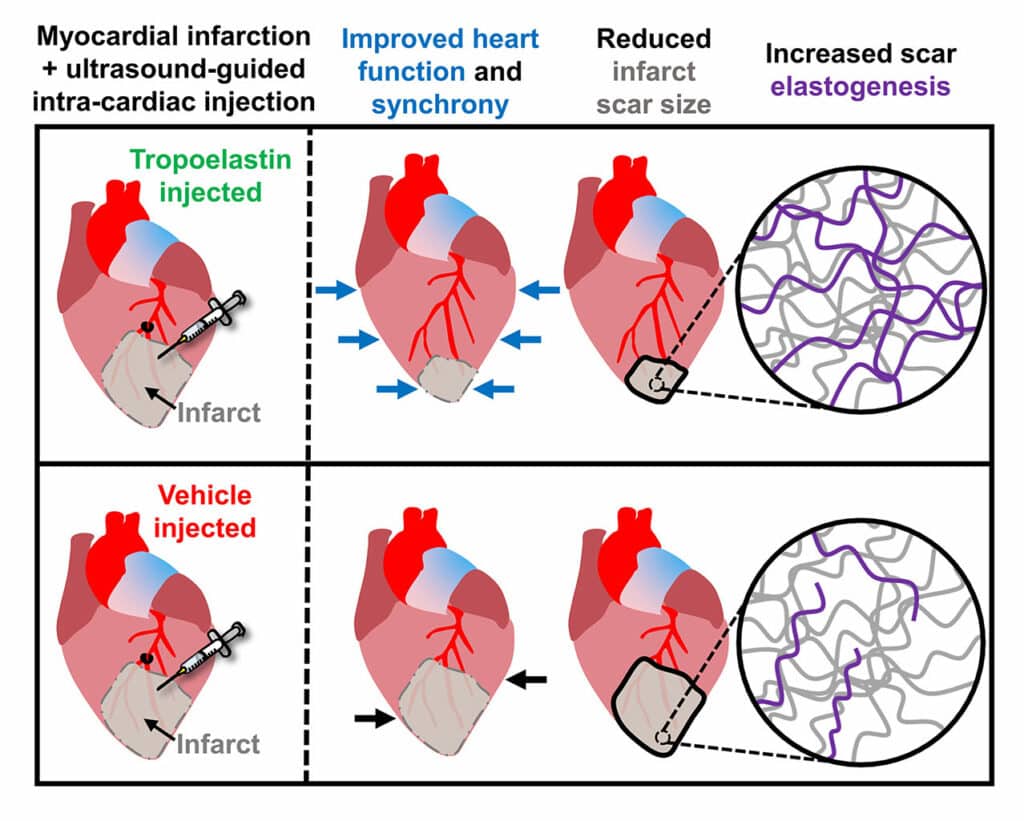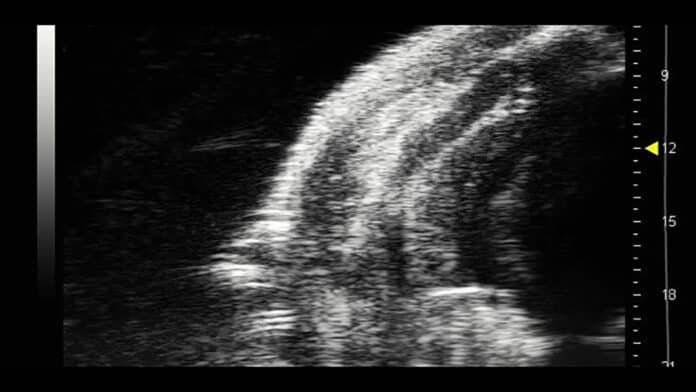A myocardial infarction (MI), commonly known as a heart attack, is among the leading causes of death worldwide. With modern treatment, most survive, but a heart attack can cause permanent damage to the heart muscle.
Following a heart attack, the body’s repair system replaces damaged or dead heart muscle cells with scar tissue. However, the scar tissue doesn’t have the elasticity and flexibility of the body’s natural muscle fibers, which reduces the heart’s ability to pump and transport blood and adds strain to the remaining heart muscle.
Now, an international team of researchers has developed a method to reverse the loss of elasticity of damaged heart tissue following heart attacks. This is for the first time scientists have investigated the potential of tropoelastin – the protein building block that gives human tissue its elasticity and ability to stretch – in treating heart disease.
In their preclinical studies in rats, researchers found that a single injection of tropoelastin could ‘turn back the clock’ on muscle damage, making the scars stretchier and helping improve the heart’s ability to contract.
“Tropoelastin can repair the heart because it is a precise replica of the body’s natural elastic protein,” explained co-author Professor Anthony Weiss from the Charles Perkins Centre and Faculty of Science.
During the experiment, the team injected purified human tropoelastin into the wall of the heart in rats four days after a heart attack. For the injection, the researchers used a new surgical method using ultrasound to guide the needle into the heart wall, which is less invasive than previous methods.

After 28 days, the heart muscle, originally damaged and scarred at the beginning, regained its elasticity and resembled muscle function similar to before the heart attack. Further tests found that the tropoelastin reduced scar size, increased scar elastin, as well as allowed more blood to pump through the heart.
Researchers conducted additional experiments on human cardiac fibroblasts in a petri dish. After being treated with tropoelastin, the cells were able to generate elastin – a crucial protein that gives human tissue elasticity and the ability to stretch.
“What we have found is highly encouraging,” said senior author Associate Professor James Chong. “We hope to continue developing the method so it can eventually be used in a clinical setting and used to treat and improve the lives of the millions of heart failure patients worldwide.”
“This research showcases the potential of tropoelastin in heart repair and suggests further work will show exciting possibilities of its role in future treatments and therapies,” said lead researcher Dr. Robert Hume who conducted the research.
Journal reference:
- Robert D. Hume, Shaan Kanagalingam, Tejas Deshmukh, Siqi Chen, Suzanne M. Mithieux, Fairooj N. Rashid, Iman Roohani, Juntang Lu, Tram Doan, Dinny Graham, Zoe E. Clayton, Eugene Slaughter, Eddy Kizana, April S. Stempien-Otero, Paula Brown, Liza Thomas, Anthony S. Weiss, and James J.H. Chong. Tropoelastin Improves Post-Infarct Cardiac Function. Circulation Research, 2023; DOI: 10.1161/CIRCRESAHA.122.321123
